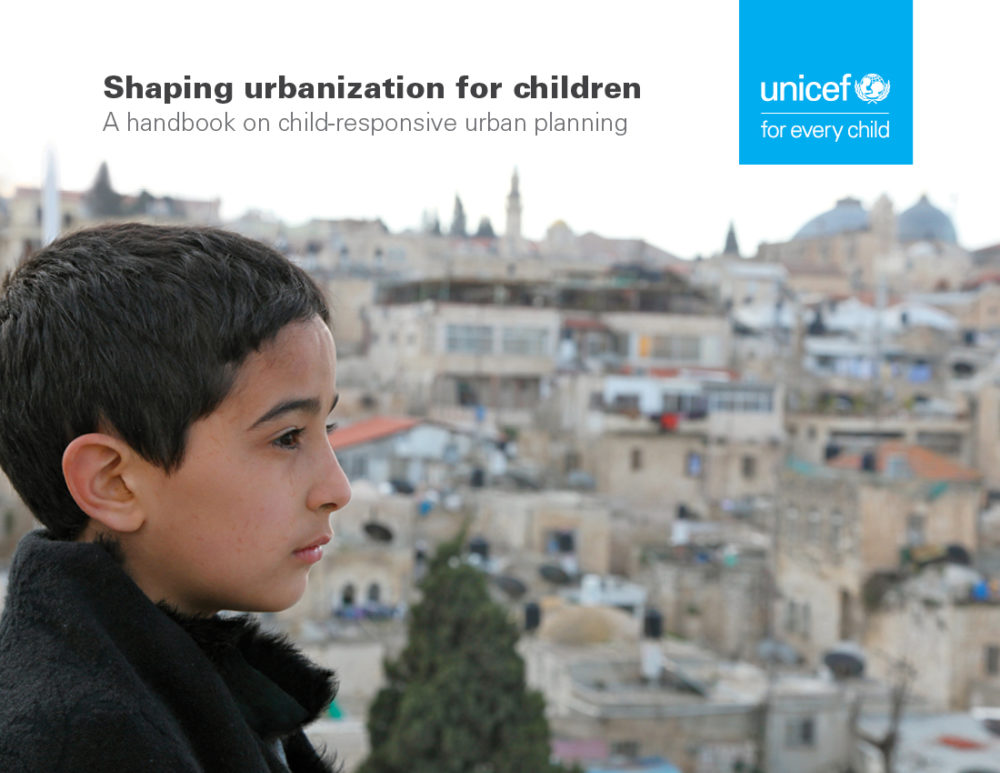Available online – Shaping urbanisation for children: A handbook on child-responsive urban planning.
The UNICEF publication, authored by Jens Aerts with technical support from other ISOCARP members, calls all urban stakeholder to bring children to the foreground of urban planning and presents concepts, evidence and technical strategies on why and how to do this. By focusing on the spatial dimensions of inequity that generate new vulnerabilities in terms of children’s health, protection and participation, this publication provides guidance on the central role that urban planning should play in creating thriving and equitable cities where children live in healthy, safe, inclusive, green and prosperous communities. Based on promising urban planning and policy that puts children and their communities first. Along 10 Children’s Rights and Urban Planning principles it illustrates that all urban planning stakeholders have a role to play: to support area-based programs that provide a clean and safe built environment for children, to embed children’s participation in urban development and to invest in geo-spatial mapping and open data platforms.
The handbook will inspire action through providing practical guidance on:
- Children’s vulnerability related to the built environment
- 5 dimensions of child-responsiveness
- 10 child rights and urban planning principles
- 11 technical strategies for cities, planning professionals, developers and civil society
- 27 promising practices that are already happening globally
- A checklist to start acting today
Download an interactive PDF version here: https://www.unicef.org/publications/index_103349.html
